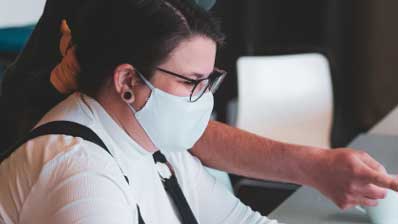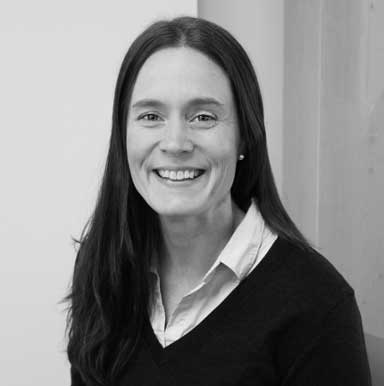Local research team reveals the challenges of building an effective plan post-COVID-19, and how to overcome them
by Shari Finnell
As organizations shift their focus to a return to “normal” after COVID-19 restrictions, many leaders are realizing that they must prepare for an entirely new normal — one that accommodates employees’ desire to introduce more flexible work-from-home policies as permanent options.
Leaders can use this unprecedented crossroads to lead their organizations to a more productive environment — with the right planning, according to Sam Julka, president and founder of Doris, a company commissioned to research how remote and in-person working models impact productivity.
Doris, which recently released a comprehensive planning guide, “Hello, Hybrid: Your Workplace Playbook:,” captured data and insights from 16 organizations throughout the Midwest to determine the different factors that contributed to work productivity under a hybrid model.
“We studied that concept very deeply,” said Julka, during a recent interview with Charitable Advisors. “We learned there were multiple definitions of the word ‘productivity.’ We also learned through this study that the hybrid work model was going to be where many organizations wind up.”
Organizations that successfully implement hybrid work models can reap numerous benefits, including higher employee retention and optimal recruiting outcomes, Julka said. However, the transition may be difficult. When compared with fully remote and fully in-person work models, hybrid models will be the most challenging to execute well for numerous reasons, Julka said.
For example, the research revealed numerous complexities beyond determining if employees will all work in the office on specified days. Teams will need to figure out policies and protocols around factors like ensuring that employees take PTO; whether it’s acceptable to send and respond to emails beyond normal work hours, managing employees’ work hours to ensure they are avoiding burnout, and assessing career advancement opportunities — whether an employee chooses to work from home or fully in the office, Julka said during the interview.
“The playbook is really meant to help any organization, specifically a leadership team that’s trying to figure out their path forward,” she said. “Instead of writing a research paper, which is what we most often do, we ended up creating a tool to make it as helpful as possible for various organizations.”
Julka noted that the playbook will guide teams through comprehensive planning and deep conversations around their hybrid model, taking into consideration scenarios that are unique to their workplace.
“I don’t think that leadership teams are going to be able to read five white papers, and then just all of sudden have the answers. There won’t be a silver bullet that everyone will be able to follow,” Julka said.
“If you’re going to do a hybrid model, you have to do a very good job of thinking deeply about what your model may look like,” she added. “There will be rigor involved in trying to figure this out, and it will be harder than it was when we all just sort of dropped the pencil at our desk in March of 2020. It will be harder as we start to figure out how to come back effectively.”
Julka also said it is important to anticipate some failure points in all the variables as organizations adapt to a new way of working. It also is critical to recognize that the foundation of a healthy hybrid model is trust and accountability among the workforce,” she said.
“If an organization is thinking about a hybrid model, our recommendation would be to have some pretty serious conversations about what it means to trust your workforce, trust your leaders and how you’re going to all hold each other accountable for what’s going to happen,” Julka said.
To hear the full interview with Sam Julka of Doris, click below.



